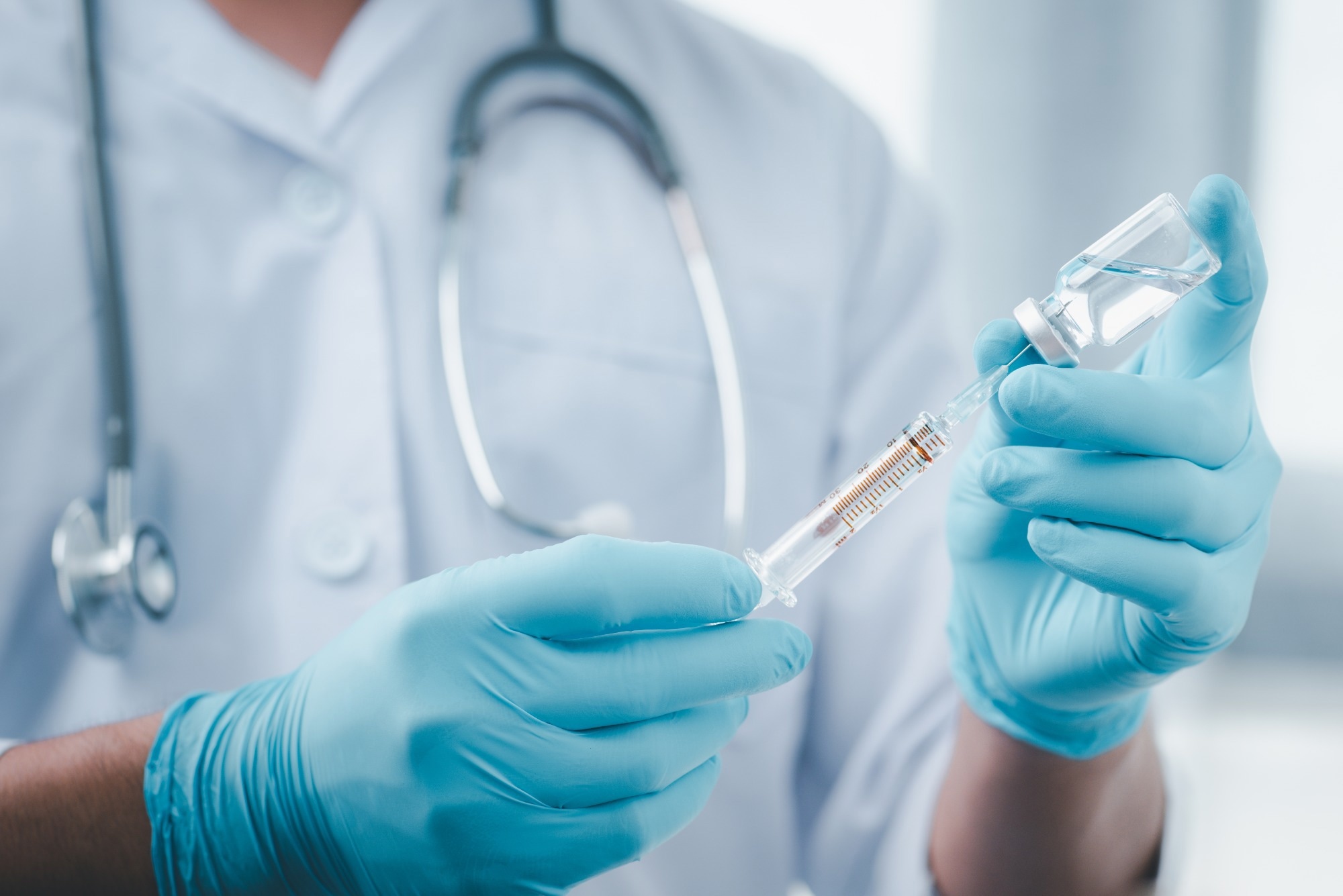Scientists have rapidly developed vaccines against severe acute respiratory syndrome coronavirus-2 (SARS-CoV-2), the causal agent of the ongoing coronavirus disease 2019 (COVID-19) pandemic. In late 2020, the COVID-19 vaccine received emergency use authorization and, subsequently, many countries started vaccination programs to reduce the disease and economic burden. Nevertheless, in many African countries, COVID-19 vaccine coverage remained significantly slow for a prolonged period, primarily due to vaccine shortage.
 Study: Assessing the impacts of COVID-19 vaccination programme’s timing and speed on health benefits, cost-effectiveness, and relative affordability in 27 African countries. Image Credit: LookerStudio/Shutterstock
Study: Assessing the impacts of COVID-19 vaccination programme’s timing and speed on health benefits, cost-effectiveness, and relative affordability in 27 African countries. Image Credit: LookerStudio/Shutterstock
Background
Owing to the poor COVID-19 vaccine roll-out situation in some African countries, achieving the mid-2022 vaccination target, set by the World Health Organization (WHO) and the Africa Centres for Disease Control and Prevention (Africa CDC), was challenging.
Even though in early 2022 the vaccine shortage eased considerably, by that time many African Union member states had experienced multiple epidemic waves due to the emergence of several variants of concern. Scientists are questioning whether rolling out COVID-19 vaccines in these countries remains an effective strategy. Continual COVID-19 vaccination is not a welcoming strategy in these African regions due to cost-effectiveness and affordability.
About the study
A new BMC Medicine study retrospectively analyzed the impact of COVID-19 vaccination timing and speed on the virus transmission in 27 African countries, based on a combined epidemiological and economic modeling approach. The authors aimed to inform future decisions about vaccine roll-out and investment.
Here, different vaccine roll-out scenarios were determined in terms of cost-effectiveness, health impacts, and relative affordability, based on vaccine types, among African Union member states. This current approach factored in the emergence of multiple variants of concern, and high seroprevalence in the region. In addition, the population characteristics of the region were considered, such as age structure, non-pharmaceutical interventions, and to understand the SARS-CoV-2 transmission pattern bettern pattern. The authors also assessed the economic value of vaccination programs.
The prevalence of infection-induced protection against SARS-CoV-2 infection was determined using a dynamic transmission model to country-level daily reported COVID-19 deaths. This approach enabled accounting for different epidemic histories encountered by African Union member states.
Findings
Vaccination programs with earlier start dates showed greater health benefits, with small incremental cost-effectiveness ratios (ICERs) in relation to the gross domestic product (GDP) per capita. Also, fast vaccination roll-out resulted in a greater health benefit with the smallest ICERs in relation to GDP per capita. A quick vaccination program enabled greater coverage beyond the vulnerable and prioritized groups.
The findings of this study must be generalized to other regions of the world. Without further validation, these results cannot be extrapolated to other vaccine products. A larger part of the population over 60 and higher income groups were linked to reduced ICERs as proportions of GDP per capita. A larger part of the population who were not vulnerable to COVID-19 at the start of vaccination programs were found to project ICERs as proportions of GDP per capita. This study revealed that despite the late start of the COVID-19 vaccination program (early- to mid-2021), which resulted in the loss of many African lives, it enabled the generation of relatively low ICERs.
Two factors were identified that could elevate the economic value of vaccination programs. Firstly, new vaccines with higher efficacy against the emerging SARS-CoV-2 variants could reduce ICER by elevating health benefits. Secondly, vaccine roll-out could be more cost-effective if viral vector vaccines were used instead of mRNA vaccines. It is important to purchase vaccines at a decreased price for low-income countries. It was estimated that if the price of viral vector vaccines were reduced by 10.32–28.69% and mRNA vaccines by 36.91-60.96% ICERs would reduce to 10–50% of GDP per capita.
Limitations
The current study has several limitations that include the inability of the epidemic model to capture the whole immune dynamics against SARS-CoV-2 infection. The model used in this study assumed that vaccinated people with prior infection histories were completely protected against SARS-CoV-2. The occurrences of breakthrough infection were not considered. Another study limitation is the assumption that vaccine supply shortage was the only reason for slow vaccination programs. Nevertheless, vaccine hesitancy played a prime role in the slow vaccination rate. The observed costs of different vaccination programs were not assessed due to the unavailability of the data.
Conclusions
The current study combined economic and epidemiological modeling approaches to examine how the timing and speed of COVID-19 vaccination affected vaccination programs’ health benefits, cost-effectiveness, and affordability in twenty-seven African countries. The timing of vaccination programs was found to play an important role in deriving health benefits. Earlier vaccination programs delivered greater health benefits and produced lower ICERs in relation to GDP per capita. Higher vaccine efficacy and lower vaccine purchasing cost could improve the overall affordability and cost-effectiveness of COVID-19 vaccination programs.